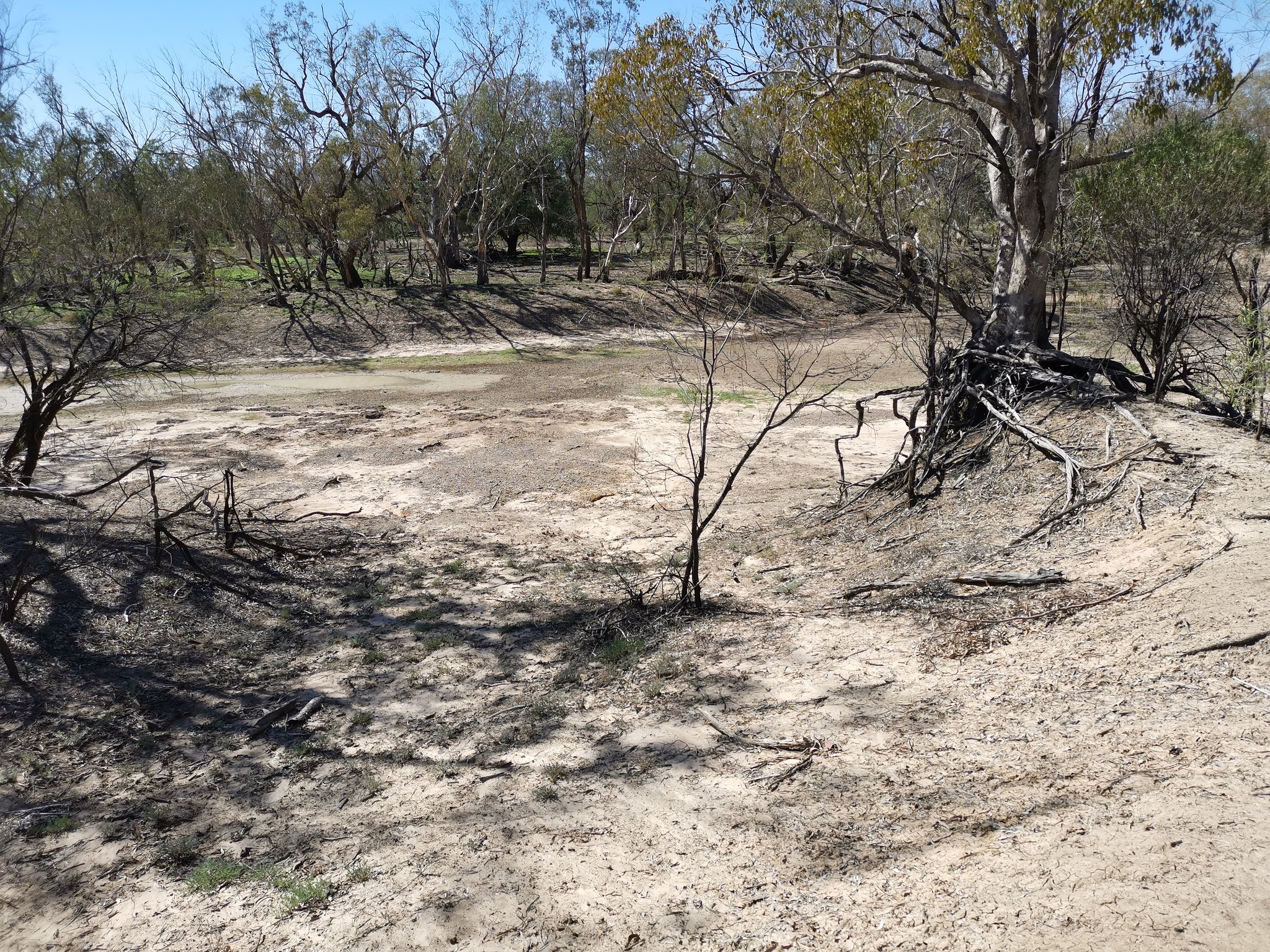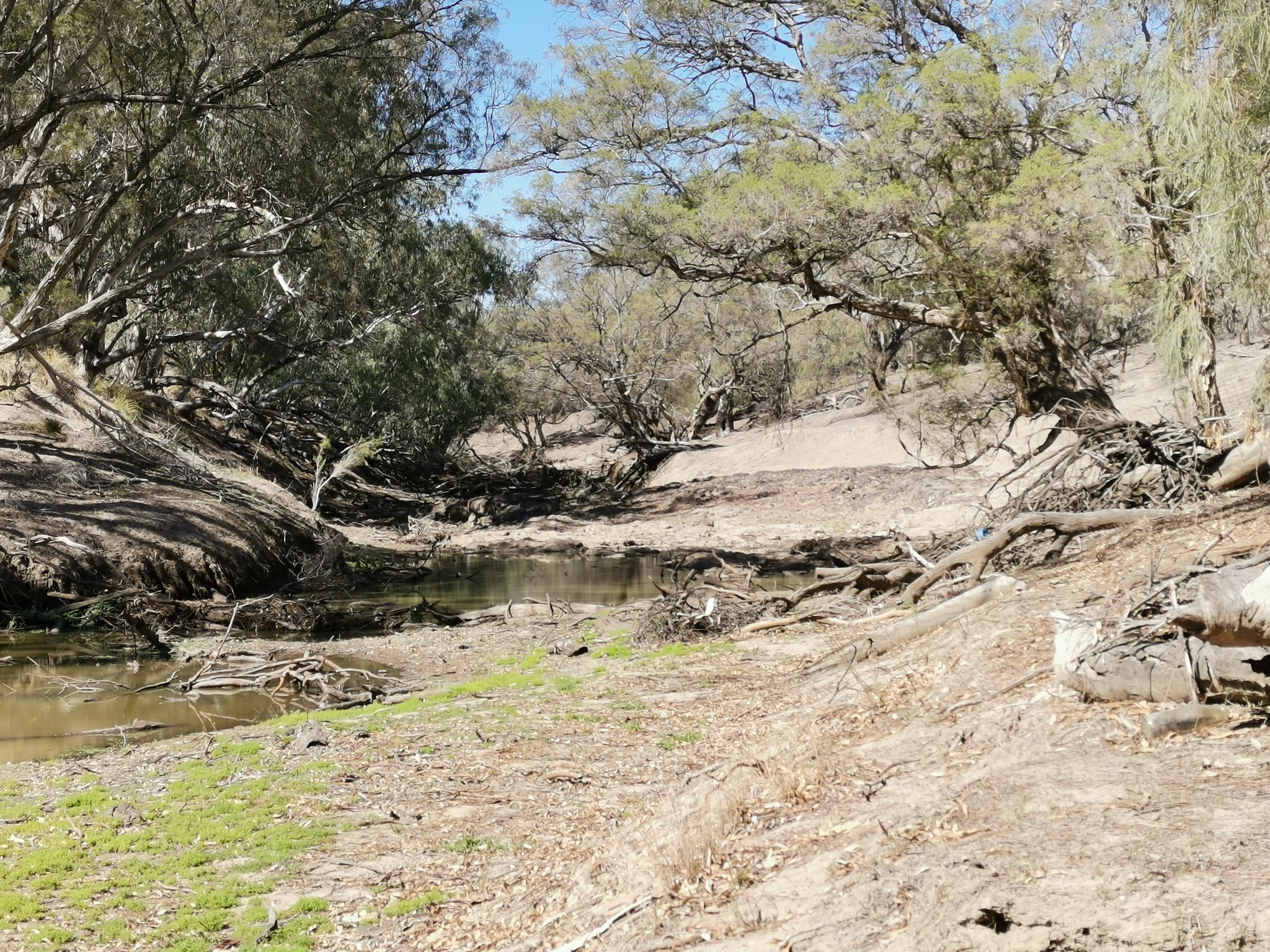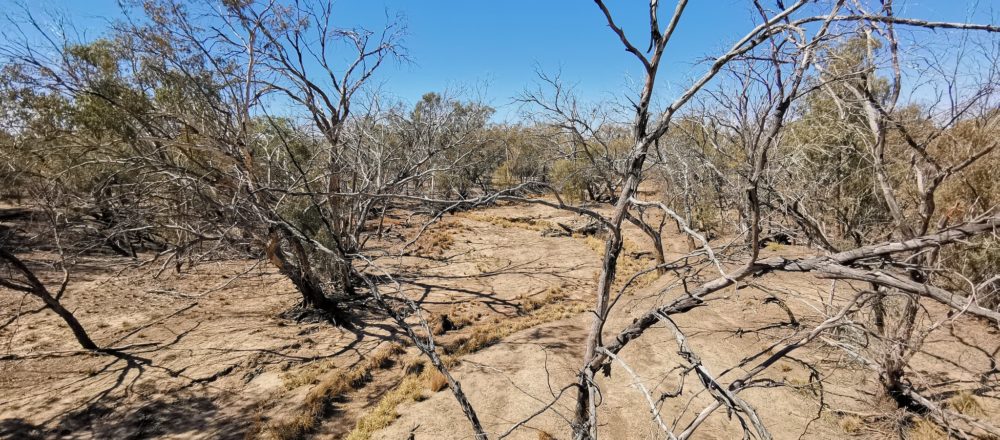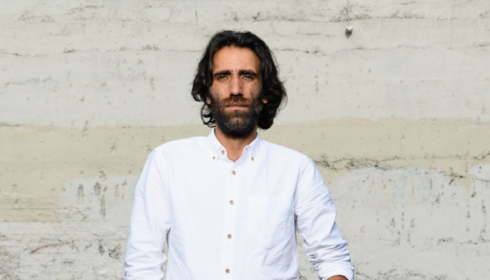On Gomeroi country, the Namoi River made me feel right when I was in it — buoying my arches and my ankles as a young girl. Its power coursed around and beneath me. It pulled at every loose scrap of fabric and flesh. It made local houses be built on stilts.
In her book Overturning Aqua Nullius, Wiradjiri Nyemba woman Dr Virginia Marshall said ‘Aboriginal identity is characteristic of water kinship.’ When even the powerful Namoi began to run dry, my body went with it and I got ill even though I was some thousands of kilometres away. We are inseparable from water — more than relying on it, we are constituted by it.
When Gamilaraay people in Collarenebri washed their bodies with water from the tap, they got rashes. The Dharriwaa Elders Group has worked to get governments to pay attention after it was revealed that the salt content of the water was some fifteen times the recommended level for someone with hypertension. Aside from the sickening taste, the salt content proves debilitating for anyone with pre-existing kidney or cardiovascular conditions.

The Moonie River in Collarenebri in April 2019. Photo credit: Michael Cleary/flickr
Wilcannia Local Aboriginal Land Council’s Kevin Cattermole told Heidi Norman for The Conversation:
‘Well before the fish kill in Menindee. Well before that, we tried to get people to listen…There will be no stories for the kids. All they’ll be hearing is how the white people destroyed our culture, our way of life, our self-being. There will be nothing for them.’
Meanwhile, Gamilaraay Elder Uncle Clem Dodd said to the ABC ‘I remember we used to spear fish and all in this [the Namoi], it was clear.’ With a dry river bed now, the devastation is making people ‘miserable’ — deprived of good tap water to drink, but also of the joy and relationality of being in and drawing from water.
Few in the complex nexus of water management authorities co-manage water with its mob and kin, indeed various government authorities stand in the way of realising that kinship. In a snap inquiry following the Menindee fish kills, the Australian Academy of Science concluded that Indigenous people ought to be included in co-management to ‘use…their knowledge…around how the system is best managed’, a call that has resounded for generations but that might now in the wake of disaster be taken seriously in New South Wales as it has (to a limited extent) in other jurisdictions like South Australia. It is not just about advisement or consultation. This is a struggle for control and survival.
A NSW state election did not change the government in control of water policy — and while it geared up to be a core anxiety in the Federal election, it delivered no clear electoral rebuke. Reporting on the dryness of the rivers has focussed out west about its impact on farmers and town economies. But Gamilaraay people are making their water kinship part of the electoral and grassroots political agenda. Young Kamilaroi student Marlie Thomas wrote of the Schools Climate Strike:
‘I am worried about its rivers, plains and ranges, its day skies and its night skies and its ecosystems that sustain life and that carry the tangible evidence of my people and our ancestors.
I walked out of my school, Gunnedah High, on March 15 because I can see the reality of climate change unfolding almost daily.’
And Gamilaraay girl from Walgett, Kyanah Hickey, delivered a blistering report to the Sydney climate strike:
‘We’ve seen the river at its good and bad. Even when it’s been at its worst, it’s always come back. On its good days, everyone could go down to the river and fish, reconnect to the land and just make memories. It was reliable.
Our people have been doing that for a very long time. For 65,000 years. And it’s just been snatched from under our feet.’

Barwon River after Banarway Crossing in April 2019. Photo credit: Michael Cleary/flickr
In her own book, Terra Nullius, Wirlomin Noongar woman Claire Coleman writes of a settler people shaped by their urging for water, as the colony of their own violence begins to resist them. Coleman and Dr. Marshall are collaborating as part of the Blak Letter Law project funded by the Copyright Agency Cultural Fund and run by the UTS Jumbunna Institute. This year, they will translate legal scholarship on water and land rights into a piece for an anthology of Indigenous fiction, reportage and poetry on law and justice. They could be working on it at no more urgent time — when the thirst for Indigenous water sovereignty is accumulating in so many ways through blak legal and political action.
The stakes are high, but they are also as pluralistic as the range of peoples and Country affected by colonisation. While on the Namoi, Gamilaraay country is drying, Torres Strait Islanders recently took their voices to the United Nations in a human rights committee complaint to accuse Australia of failing to act on climate change and risking the loss of their islands to rising oceans. Warraber man, Kabay Tamu, said:
‘When erosion happens, and the lands get taken away by the seas, it’s like a piece of us that gets taken with it – a piece of our heart, a piece of our body. That’s why it has an effect on us. Not only the islands but us, as people. […] I fear this will be colonisation all over again.’
While this is happening, the Top End Borroloola community are working to remove the poison lead from their water after mining and government put it there for an unclear period of time before they sent around letters in April 2018. As a Garrwa and Yanyuwa community leader and musician Gadrian Hoosan put it himself for IndigenousX:
‘Our ancient laws are breached when Water is Poison. We must as Darrbarrwarra as good warriors for the land make things right, create the balance again in nature, that is our role as Jungkayi, as Aboriginal people, as Indigenous peoples globally. But the Federal Australian Government and NT Labour Government and local government have all breached their own laws.’
It is happening everywhere. And the totality of water breaches is impossible to ignore — but equally urgent is what is emerging to meet it: water justice.

This section of the Namoi River, south of Boggabri, was dry in April 2019. You can see that a motor vehicle has driven along the riverbed. Photo credit: Michael Cleary/flickr
On the second weekend of May, activists from Fighting in Resistance Equally delivered and installed water filters to Collarenebri to fulfil their basic human right of drinking water without having to purchase it in expensive slabs of bottles or boxes, or rely on donations. Gomeroi man and FiRE activist Raymond Weatherall said:
‘We can’t stand idly by when things go wrong, so we just do it. We went out to the dam and the river. There was blue green algae everywhere, dead birds in the water. But it’s amazing how people can just reach into their pockets and do something. After spending weekends bringing up 13,000 litres of bottled water in five cars, we had seven cars of students from Canberra, Newcastle and Sydney come up and install 312 water filters.
It’s not over. The governments still haven’t done anything and they won’t. The next steps are us getting water tanks and solar panels, community gardens. We need to be self-sustaining.’
As critical attention to the drought and water management grows, everyone is humbled and reminded of our deep reliance on water, settler and First Nations alike. Forefront in our minds, however, must be the sovereignty and kinship with water, Country and relations for which mob are fighting. First Nations are doing the hard work in resistance to the colonial violence of aqua nullius.
What you can do
You can support the campaigns in this article in the following ways:
- Follow Borroloola Community Change-Makers — and watch Warburdar Bununu: Water Shield at Sydney Film Festival
- Donate to Dharriwaa Elders Group
- Donate to FIRE’s water filter fund
- Support Seed Mob


